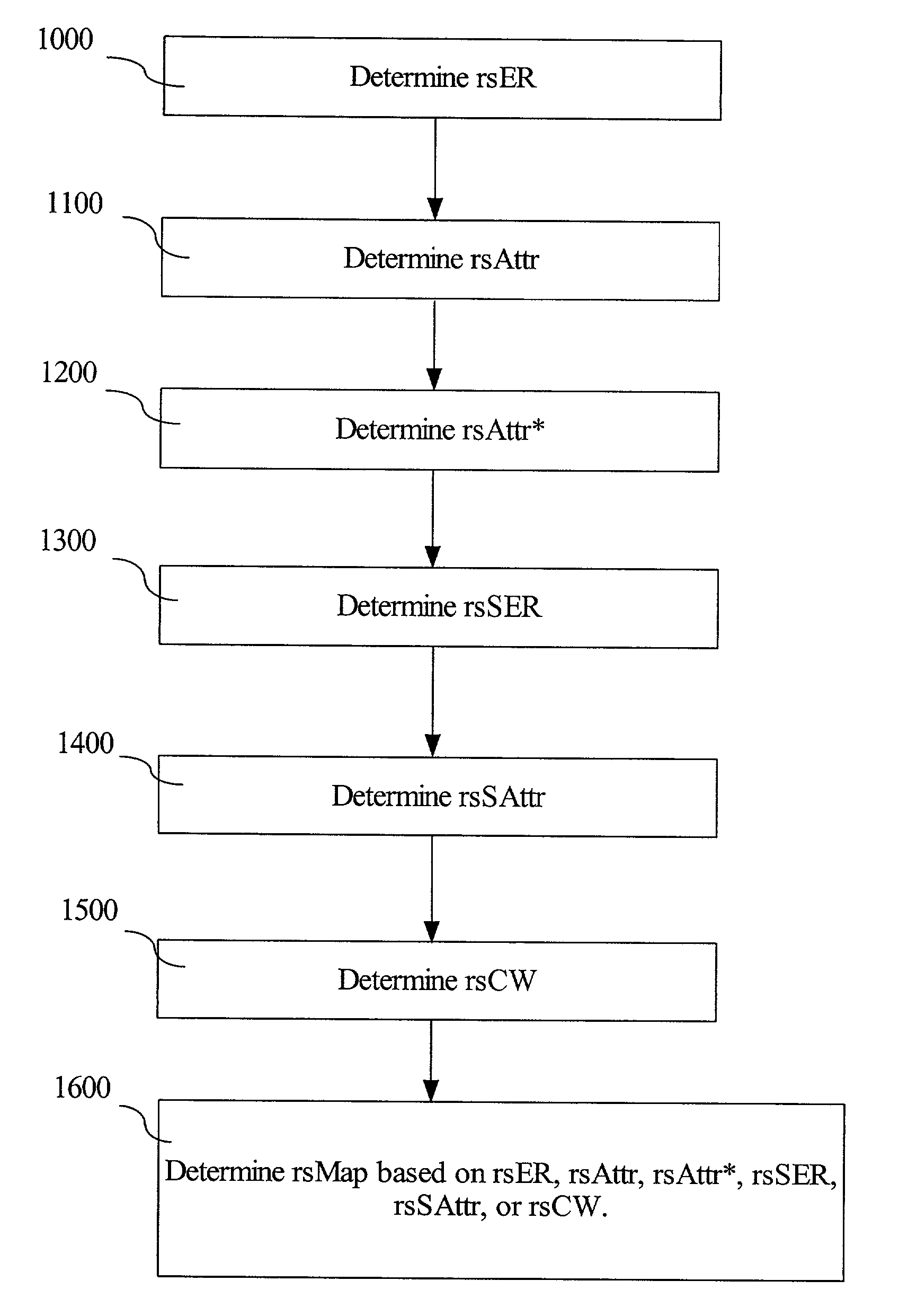Impact analysis of metadata
a technology of impact analysis and metadata, applied in the field of computer systems and software, can solve the problems of large interface creation between databases, difficult and tedious task, difficult and tedious to determine which interfaces and databases are affected, and the process of mapping metadata descriptors to the consolidated database is normally a very tedious task, so as to reduce or eliminate the manual mapping process and reduce the relative probability of relationship.
- Summary
- Abstract
- Description
- Claims
- Application Information
AI Technical Summary
Benefits of technology
Problems solved by technology
Method used
Image
Examples
example 1
[0054]FIG. 4 is a diagram of the logical view of components of metadata descriptors having two levels. Metadata 41 from a first database 135a is mapped to a naming standard metadata descriptor 43 in a second database 135b. The metadata 41 includes a first level descriptor 45 and a second level descriptor 47. The naming standard metadata descriptor 43 also includes a first level descriptor 49 and a second level descriptor 51. Preferably, the first level descriptors 45 and 49 are more important in a hierarchy of description than the second level descriptors 47 and 51. In one embodiment, the level one descriptors 45 and 49 are entities and the level two descriptors 47 and 51 describe information about the entity.
[0055]In a database for a business that records information about people and other business entities, different metadata descriptors of people or businesses would be “level one” metadata descriptor entities in the database. An example of a level one descriptor “entity” in such ...
example 2
Exemplary Database and Naming Standard Hierarchy
[0067]FIG. 6 is an example of a logical view of the organization of metadata in a typical database. The database 135 includes one or more tables 137 of data. A table 137 includes metadata named to describe the data contained in the table. The table 137 also includes fields 138. Each field 138 includes metadata named to describe the data contained in the field 138. Each field 138 can be broken into tokens 139. In an example of a database 135 that includes information about customers, a table 137 could be named “customer,” one field might be the customer's name, called “customer_name,” and the tokens of the field are “customer” and “name.” Tokens are an example of metadata levels. In this example, the metadata descriptors include table names and field names. The database 135 depicted in FIG. 6 has an ordered hierarchy of metadata such that the table name metadata descriptor is more important to determining a relationship than the field m...
example 3
Determination of an Impact Rating (Mapping)
[0073]FIG. 9 shows an example of method to determine an impact rating between two metadata descriptors. The method shown in FIG. 9 uses the hierarchical naming standard depicted in FIG. 7. First, at step 1000, a software program determines a relative strength of the entity relationship (rsER). At step 1100, a relative strength of the attribute relationship (rsAttr) considering the rsER is determined. Because the entity relationship is more important than the attribute relationship, “considering the rsER” means that it is desirable to increase the rsAttr if the rsER is above a predetermined amount. For simplicity, as used herein, the predetermined amount is any positive value of rsER. However, the predetermined amount may be set at any level. A relative strength of the attribute relationship without considering the rsER (rsAttr*) (step 1200), a relative strength of the subentity relationship (rsSER) (step 1300), a relative strength of the su...
PUM
 Login to View More
Login to View More Abstract
Description
Claims
Application Information
 Login to View More
Login to View More - R&D
- Intellectual Property
- Life Sciences
- Materials
- Tech Scout
- Unparalleled Data Quality
- Higher Quality Content
- 60% Fewer Hallucinations
Browse by: Latest US Patents, China's latest patents, Technical Efficacy Thesaurus, Application Domain, Technology Topic, Popular Technical Reports.
© 2025 PatSnap. All rights reserved.Legal|Privacy policy|Modern Slavery Act Transparency Statement|Sitemap|About US| Contact US: help@patsnap.com



